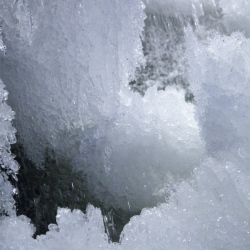
More than two-thirds of the recent rapid melting of the world’s glaciers can be blamed on humans, a new study finds. Scientists looking at glacier melt since 1851 didn’t see a human fingerprint until about the middle of the 20th century.
Even then only one-quarter of the warming wasn’t from natural causes. But since 1991, about 69 percent of the rapidly increasing melt was man-made, said Ben Marzeion, a climate scientist at the University of Innsbruck in Austria. "Glaciers are really shrinking rapidly now," he said. "I think it’s fair to say most of it is man-made." Scientists fault global warming from the burning of coal, oil and gas as well as changes in land use near glaciers and soot pollution. Glaciers in Alaska and the Alps in general have more human-caused melting than the global average, Marzeion said.
The study is published Thursday in the journal Science. The research is the first to calculate just how much of the glacial melting can be attributed to people and "the jump from about a quarter to roughly 70 percent of total glacier mass loss is significant and concerning," said University of Alaska Fairbanks geophysicist Regine Hock, who wasn’t part of the study.
Over the last two decades, about 295 billion tons (269 billion metric tons) of ice is melting each year on average due to human causes and about 130 billion tons (121 million metric tons) a year are melting because of natural causes, Marzeion calculated. Glaciers alone add to about four-tenths of an inch of sea level rise every decade, along with even bigger increases from melting ice sheets, which are different than glaciers, and the expansion of water with warmer temperatures.
